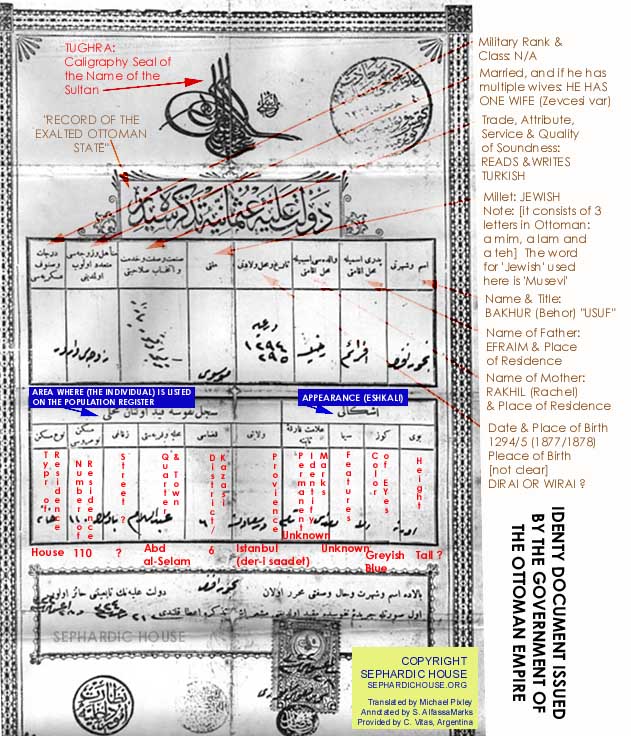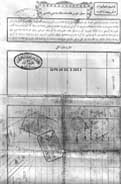Example of a common identification document issued by the Ottoman Empire
"Tezkire-i Osmaniye"
What is it?
Tezkire-i Osmaniye documents were first adopted in 1863 C.E. (1280 A.H.) as, is in effect, an identification document. It included information describing the holder (parents, address, physical description) and where he/she was registered in the population registry.
What Language is it in?
It is in Ottoman. A script known as Osmanlica. It is a script that was used in the Ottoman Empire, prior to its dissolution in 1923. Osmanlic/Ottoman Turkish was the language of the Ottoman court and government. Documents were issued in it as were books, published/written by members of the government, including civil servants, the military, the courts.
It is the Arabic script and alphabet which includes several Persian letter innovations to reflect certain sounds (like "p") not in the Arabic language. Ottoman Turkish is an amalgam of Arabic, Persian and Turkish, with Turkish grammar (generally) serving as the skeleton of the language. Arabic and Persian words/phrases (and some grammar) were also tossed in so that the language could be expanded. Osmanlica is no longer used in Turkey.
When was it issued?
This specific document sample was issued in 1909.
Translator's Note:
Note on the last name of the person who was issued this document: The 'last name' seems to be something like 'Ufuf" or the like. This may not be 100% correct, as the vowels can indicate various interpretation.
Biographical note:
The document belonged to Don Obadiah Vitas, born in Istanbul March 27, 1873. His father (who these documents originally were issued to) was Efraim Vitas (1838-1931). His mother was Rachel Russo (1849-1914). Don Obadiah Vitas arrived in Buenos Aires on the vessel Algerie in 1913. He settled in Santa Fe, Argentina where he was nominated Haham of the local Sephardic community. He was a French teacher, as well as president of the local Sephardic community until his death. He is buried in a site reserved for honorable people..
Comments on the translated document:
The name "Bakhur" - is possibly indicative of Bechor/Behor. This name is listed on the document.
Click on images to enlarge 

Back
(this side is not translated, and has been provided for information only)
This document was provided by Mr. Carlos Vitas of Buenos Aires, Argentina (July 2000); It was translated by Mr. Michael Pixley (November 2000). Annotation was completed by Mr. S. Alfassa Marks; technical assistance was provided by Dr. David Sheby.
Sources:
- Pakalin, v. III, p. 492. Osmanli Tarih Deyimleri ve Terimleri Sozlugu.
- Michale M. Pixley, Translation.

